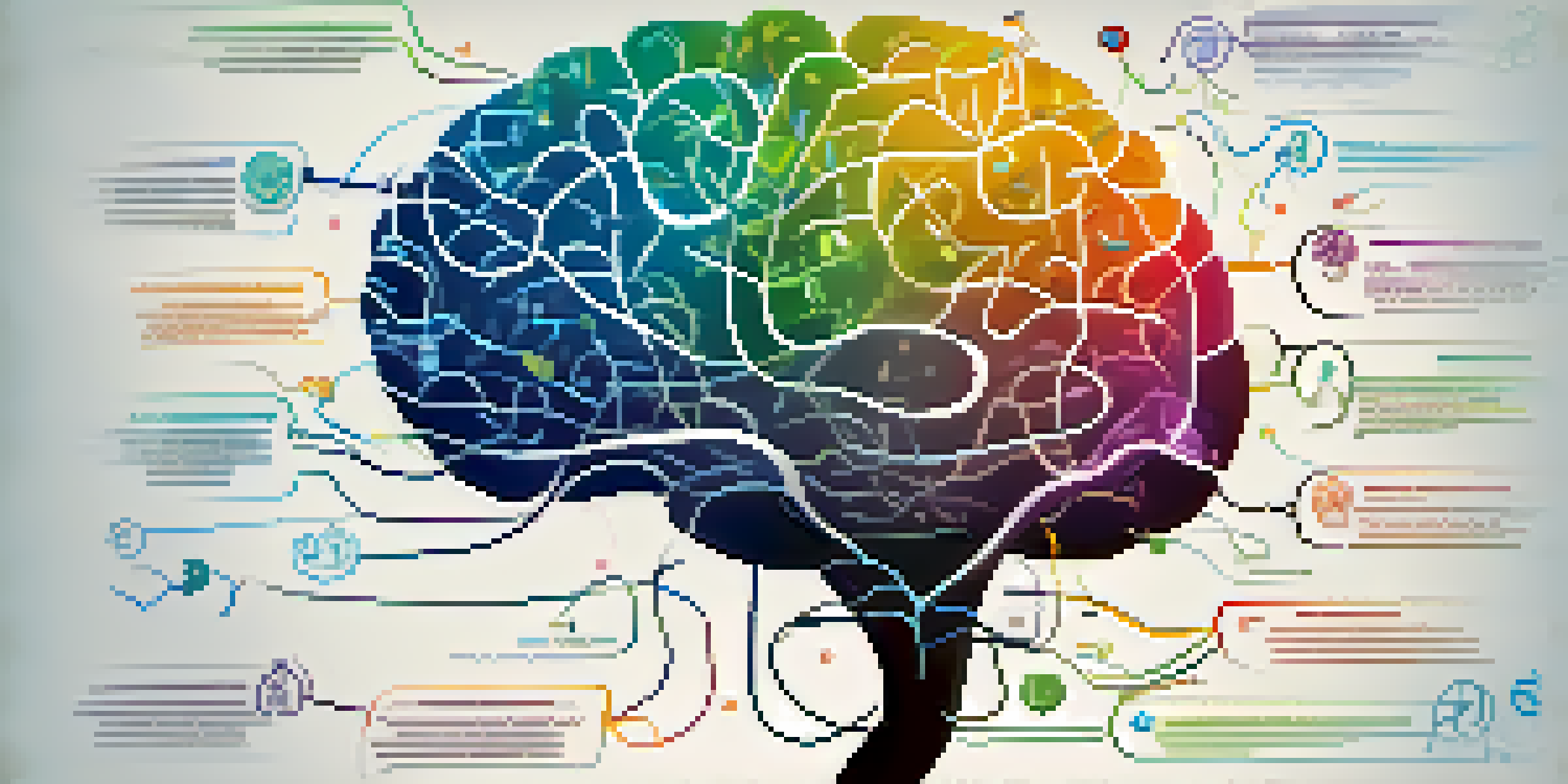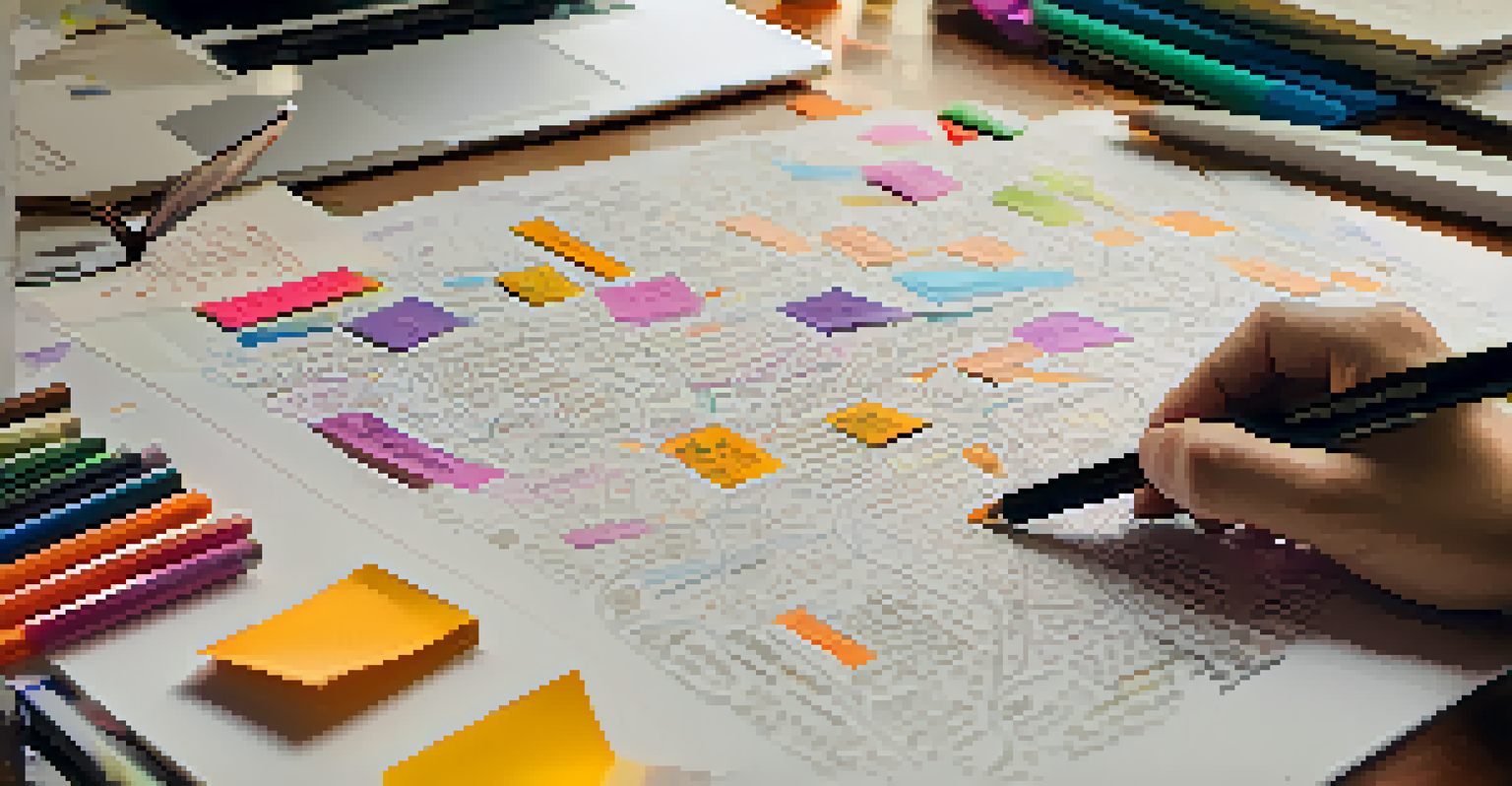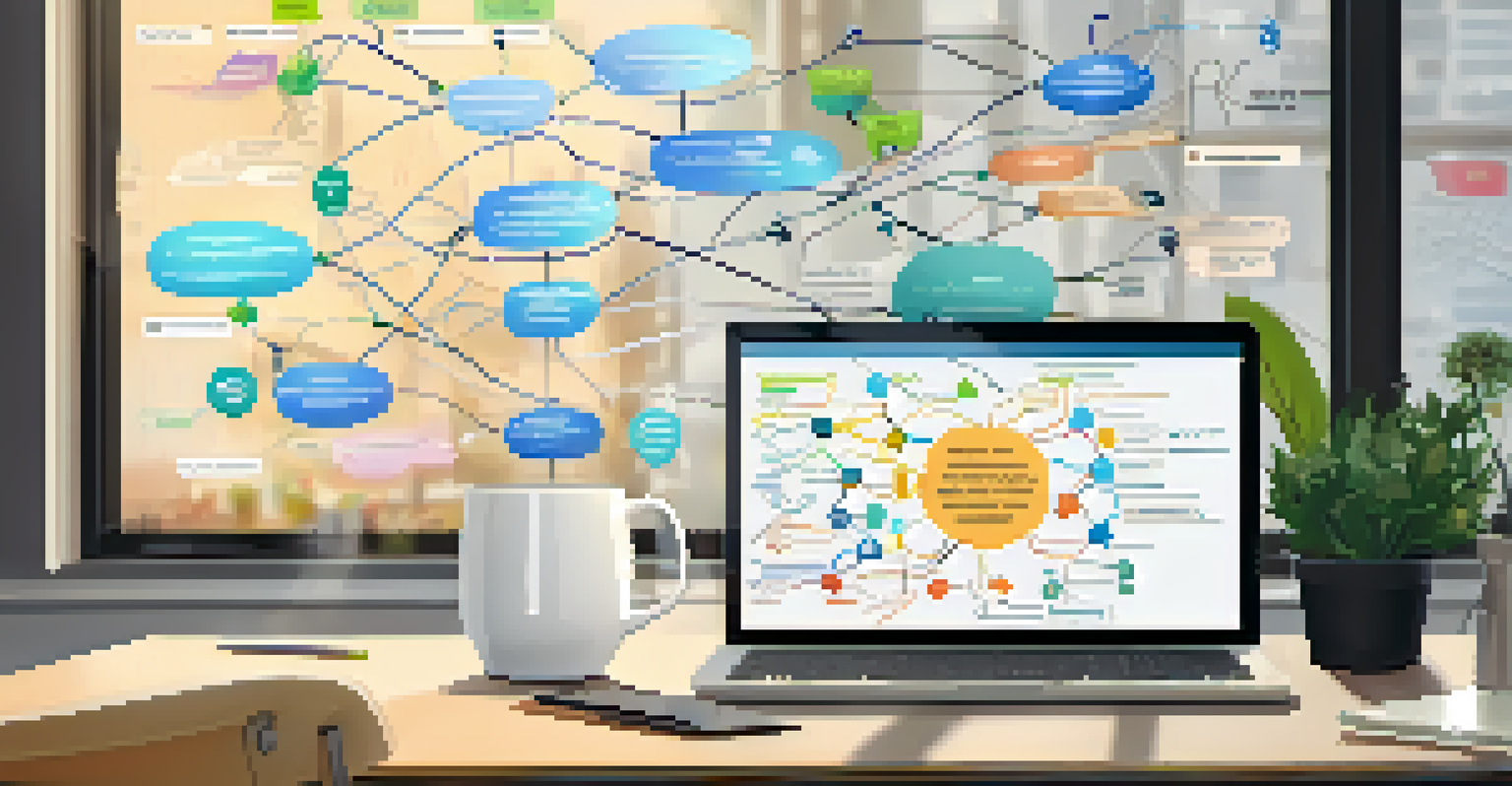Mind Mapping: A Visual Tool for Enhanced Creative Thinking

Understanding Mind Mapping and Its Benefits
Mind mapping is a visual technique that helps organize thoughts and ideas. By using a diagram, you can see relationships and hierarchies among concepts, which makes it easier to process information. This approach is particularly beneficial for brainstorming sessions, allowing your creativity to flow without constraints.
A mind map is a great way to clarify your thoughts and explore your ideas in a structured way.
The main advantage of mind mapping is that it taps into the brain's natural way of thinking. Instead of linear notes, a mind map represents thoughts in a free-form style, making it more engaging. This can significantly enhance recall and comprehension, making it a powerful tool for students and professionals alike.
Additionally, mind mapping can reduce cognitive overload. When you're faced with a mountain of ideas, visualizing them can help break down complex information into digestible pieces. This clarity not only aids in understanding but also fosters innovative thinking.
How to Create an Effective Mind Map
Creating a mind map is a straightforward process that anyone can master. Start with a central idea or theme in the middle of the page, then branch out with related concepts. Using colors, images, and symbols can make your map visually appealing and easier to remember.

It's essential to keep the branches short and to the point. This encourages you to think in keywords rather than lengthy sentences, which can stifle creativity. As you expand on ideas, feel free to add new branches or sub-branches to capture all aspects of your thoughts.
Mind Mapping Boosts Creativity
By visually organizing thoughts, mind mapping enhances clarity and fosters innovative thinking.
Remember, there's no right or wrong way to design your mind map. The goal is to create a visual representation that works for you. The more personal and intuitive your map, the more effective it will be in enhancing your creative thinking.
Mind Mapping Tools: Digital vs. Paper
When it comes to mind mapping, you have the option of using digital tools or traditional pen and paper. Digital tools like MindMeister or XMind offer features like easy editing, sharing, and collaboration, which can be beneficial for team projects. They often include templates and styling options that can help you get started quickly.
The mind is not a vessel to be filled, but a fire to be kindled.
On the other hand, many people find that writing by hand fosters a deeper connection to their thoughts. The tactile experience of pen on paper can stimulate creativity in ways that typing on a screen cannot. Plus, there's something satisfying about visually crafting your ideas without the distractions of technology.
Ultimately, the choice between digital and paper mind mapping depends on your personal preference and the context in which you're working. Experimenting with both can lead you to discover which method enhances your creativity the most.
Applications of Mind Mapping in Various Fields
Mind mapping is a versatile tool that can be applied across various fields. In education, it helps students organize their study materials and prepare for exams by visually connecting ideas. This method caters to different learning styles, making it easier for students to grasp complex subjects.
In the business world, mind mapping is used for project management, strategic planning, and brainstorming sessions. Teams can visually map out project timelines, identify potential roadblocks, and collaborate more effectively. It encourages participation, allowing all voices to be heard in the ideation process.
Versatile Applications Across Fields
Mind mapping can be effectively used in education, business, and creative professions to improve organization and collaboration.
Creative professionals, like writers and designers, also benefit from mind mapping. It can help generate ideas for stories, marketing campaigns, or design projects. By visualizing the connections between different concepts, creators can uncover new angles and possibilities.
Enhancing Problem-Solving Skills with Mind Mapping
One of the most powerful aspects of mind mapping is its ability to enhance problem-solving skills. When faced with a challenge, visually breaking down the problem into smaller components can help identify root causes and potential solutions. This structured approach encourages out-of-the-box thinking.
By laying out all the elements related to a problem, you can see connections that may not be immediately obvious. This can lead to innovative solutions and a more comprehensive understanding of the issue at hand. Mind mapping encourages you to explore various perspectives, which is crucial for effective problem-solving.
Additionally, mind maps can serve as a roadmap for action. Once you've identified potential solutions and the steps needed to implement them, you can visually track your progress. This not only helps in staying organized but also boosts motivation as you see your ideas come to life.
Tips for Maximizing Your Mind Mapping Experience
To get the most out of mind mapping, start by setting clear objectives. Knowing what you want to achieve with your mind map can guide your thought process and keep you focused. Whether it’s brainstorming, planning, or learning, clarity on your goals will make your map more effective.
Incorporating visual elements is another great way to enhance your maps. Use colors to differentiate between themes, icons to represent concepts, and images to spark creativity. The more engaging your mind map, the more likely you’ll connect with the content and remember it later.
Improves Problem-Solving Skills
This technique helps break down complex challenges, revealing connections that lead to innovative solutions.
Lastly, don’t hesitate to revisit and revise your mind maps. As new ideas emerge or circumstances change, updating your map can keep your thoughts relevant and aligned with your objectives. This iterative process not only improves the quality of your maps but also deepens your understanding of the subject matter.
Conclusion: Unlock Your Creative Potential with Mind Mapping
Mind mapping is more than just a visual tool; it's a gateway to unlocking your creative potential. By organizing thoughts and ideas visually, you can enhance clarity, foster innovation, and improve problem-solving skills. Whether you're a student, professional, or creative, mind mapping can transform the way you think.
As you embrace this technique, remember that the key is to make it your own. Experiment with different styles, tools, and approaches until you find what resonates with you. With practice, mind mapping can become a natural part of your creative process.

So why not give it a try? Start small, create your first mind map, and watch how it elevates your thinking. The journey to enhanced creativity is just a mind map away!